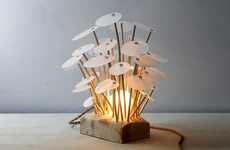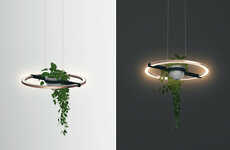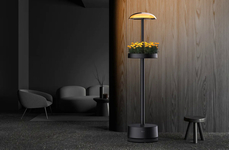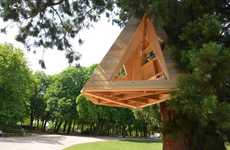
The Living Light Atmospheric Lamp Produces Energy Using Photosynthesis
Alyson Wyers — December 21, 2017 — Eco
References: livinglight.info & springwise
This plant-powered atmospheric lamp is the first of its kind. Created by Dutch designer Ermi van Oers, the Living Light harvests energy from living plants using the process of photosynthesis. You get the plant to emit light by stroking its leaves. The better you take care of the plant, the more energy it will produce. This means the lighting is not for those lacking a green thumb.
The highly crafted atmospheric lamp boasts both glass blowing techniques and 3D printing. The plant is surrounded by a glass tube and uses microbial fuel cell technology to provide light. Other microbial fuel cells have been used in the treatment of wastewater.
The Living Light was developed along with the Netherlands-based research group Plant-e.
The highly crafted atmospheric lamp boasts both glass blowing techniques and 3D printing. The plant is surrounded by a glass tube and uses microbial fuel cell technology to provide light. Other microbial fuel cells have been used in the treatment of wastewater.
The Living Light was developed along with the Netherlands-based research group Plant-e.
Trend Themes
1. Plant-powered Lighting - The trend of using photosynthesis to power lights and devices with live plants. This creates an ecologically sustainable energy source and opens up a new market for eco-conscious consumers who want to reduce their carbon footprint.
2. Microbial Fuel Cells - The trend toward using microbial fuel cell technology in a variety of industries. This provides a new, clean and renewable power source which can be used to power various industrial applications.
3. Smart Gardening - The rise of technologically assisted gardening tools and services that help consumers maintain healthy plants that can power lights and devices. A new industry aimed at environmentally aware consumers who want to grow their own energy source.
Industry Implications
1. Sustainable Lighting - The lighting industry has an opportunity to create new eco-friendly lighting solutions that use photosynthesis or other natural processes to power their lights.
2. Waste Management - The waste management industry can leverage microbial fuel cell technology to produce energy through the treatment of waste products and provide an environmentally friendly alternative to traditional waste disposal methods.
3. Smart Home - The smart home industry can incorporate plant-powered lighting solutions to create a more sustainable and energy-efficient home environment for consumers.
6.2
Score
Popularity
Activity
Freshness























